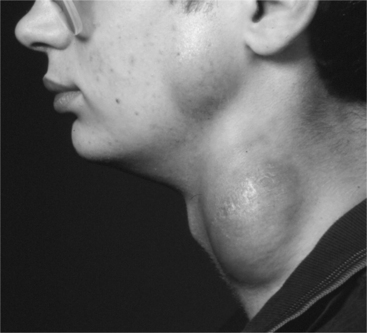CAT SCRATCH DISEASE
Cat scratch disease (CSD) is also called cat scratch fever. It is also known as regional lymphadenopathy, or lymphadenitis. Even though the disease has been described since 1889, the causative agent was not positively identified until 1992.
CAT SCRATCH DISEASE IN HUMANS
CSD in humans is usually self-limiting, without any permanent damage. Most cases are seen in people under 21 and those in the veterinary profession. There is usually, but not always, a history of a cat scratch or bite. Letting a cat lick an open wound can also result in CSD. A small pustule resembling an insect bite develops at the site within 3 to 10 days (Figure 5). In 1 to 2 weeks, lymph nodes near the area will become swollen and painful (lymphadenopathy). Nearly half of the people who develop the pustule will also develop a headache, mild fever, and lethargy. The lymph nodes of the neck and extremities are most often affected because most cat bites and scratches occur on the arms and legs. The lymphadenopathy is unilateral, on the side where the infection occurred. Nearly a quarter of infected patients will develop very painful, pus-filled lymph nodes (lymphadenitis). Even though CSD is self-limiting, it can take up to 3 weeks for the lesion at the site of infection to heal and several months for the lymph nodes to return to their normal size. In mild cases, treatment is usually not required.
Stay updated, free articles. Join our Telegram channel

Full access? Get Clinical Tree



